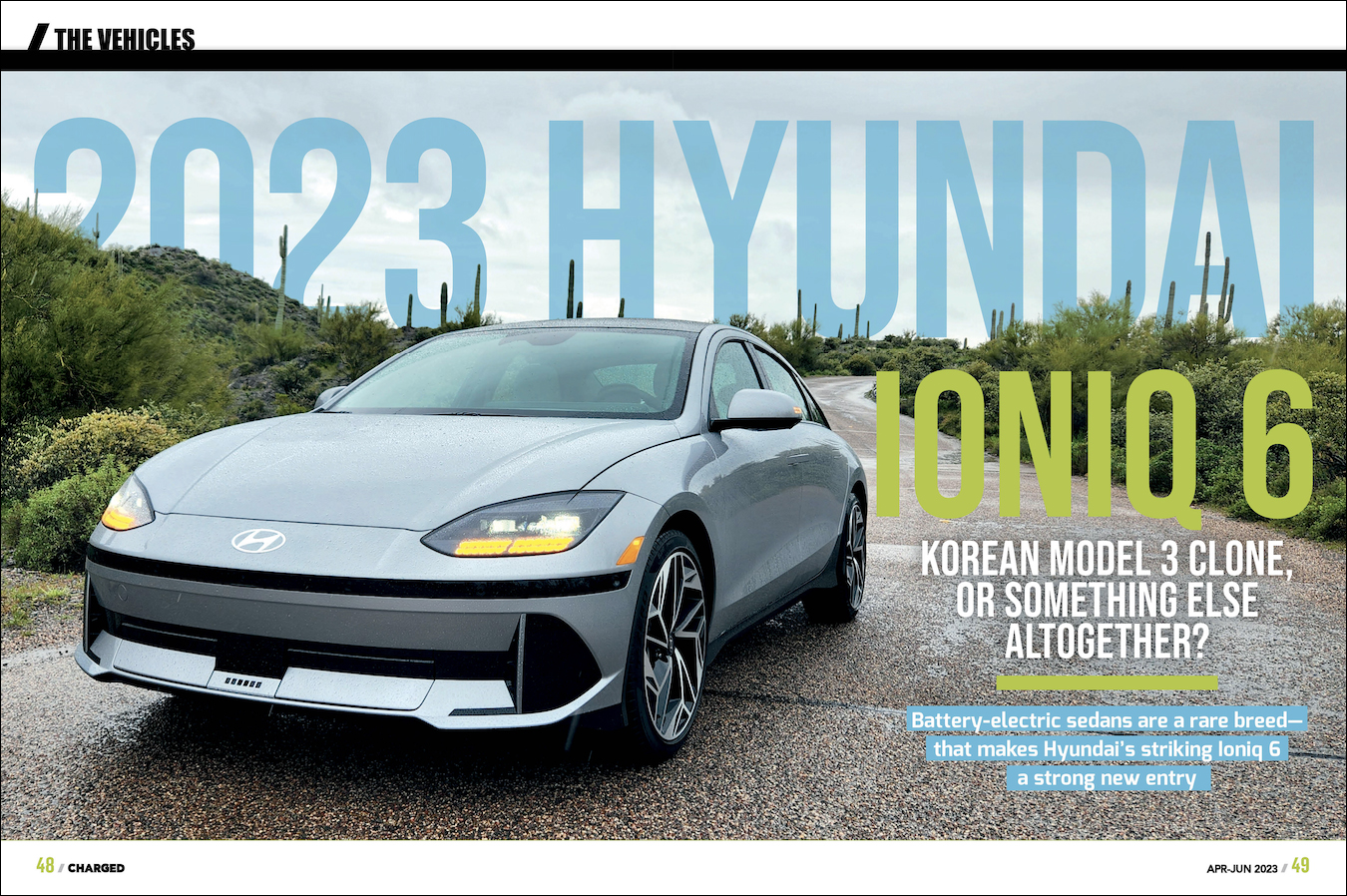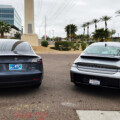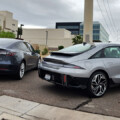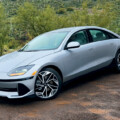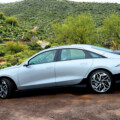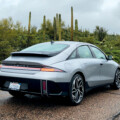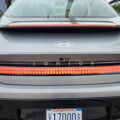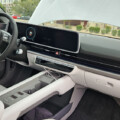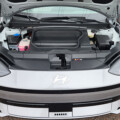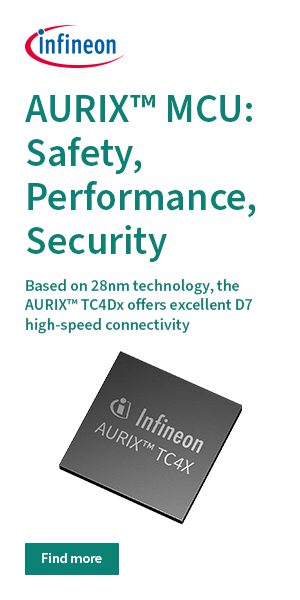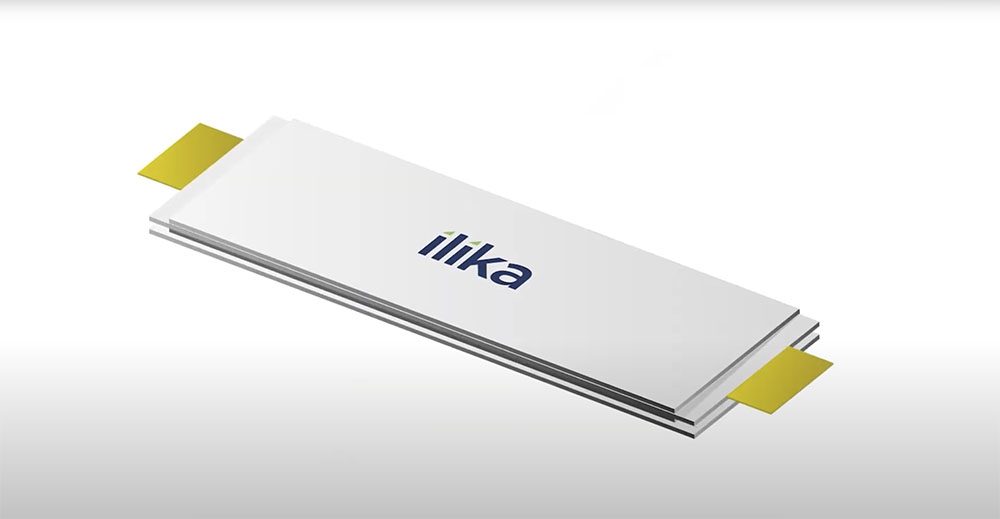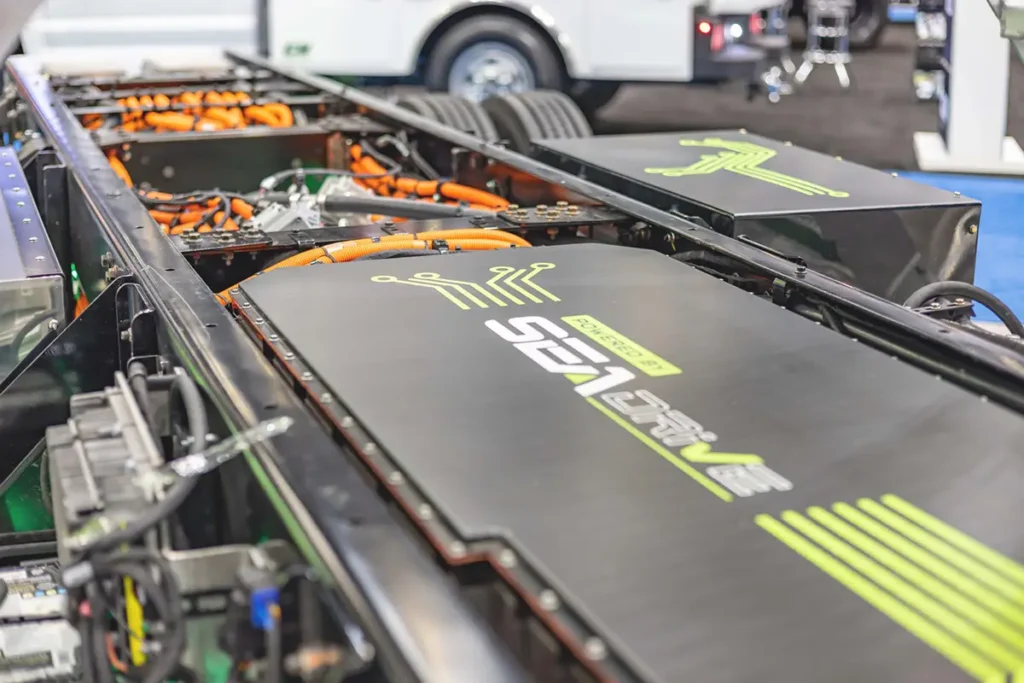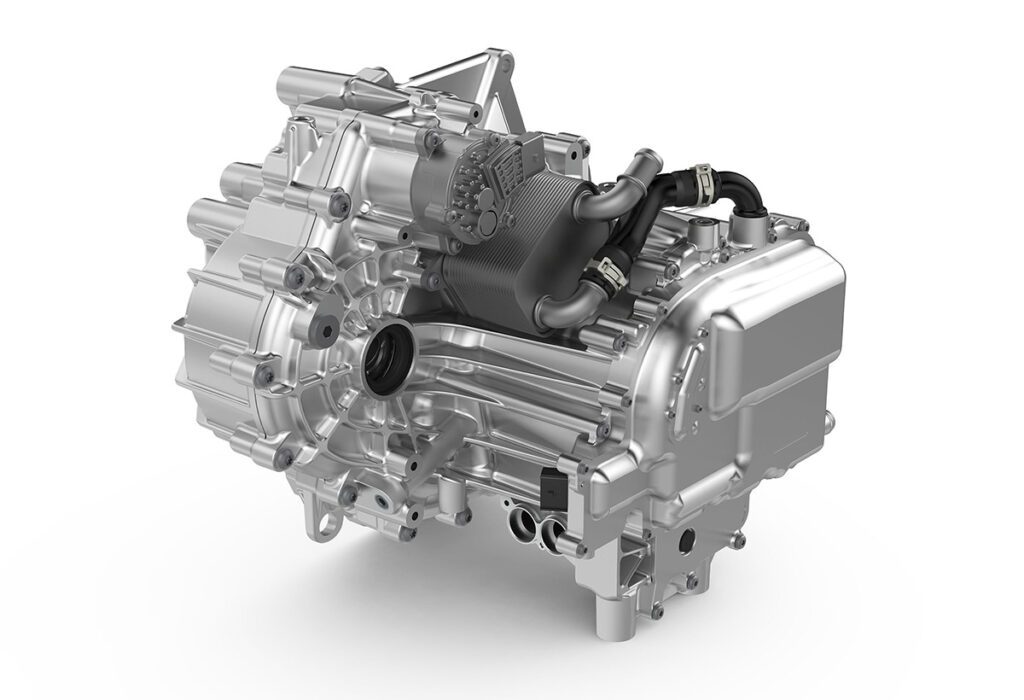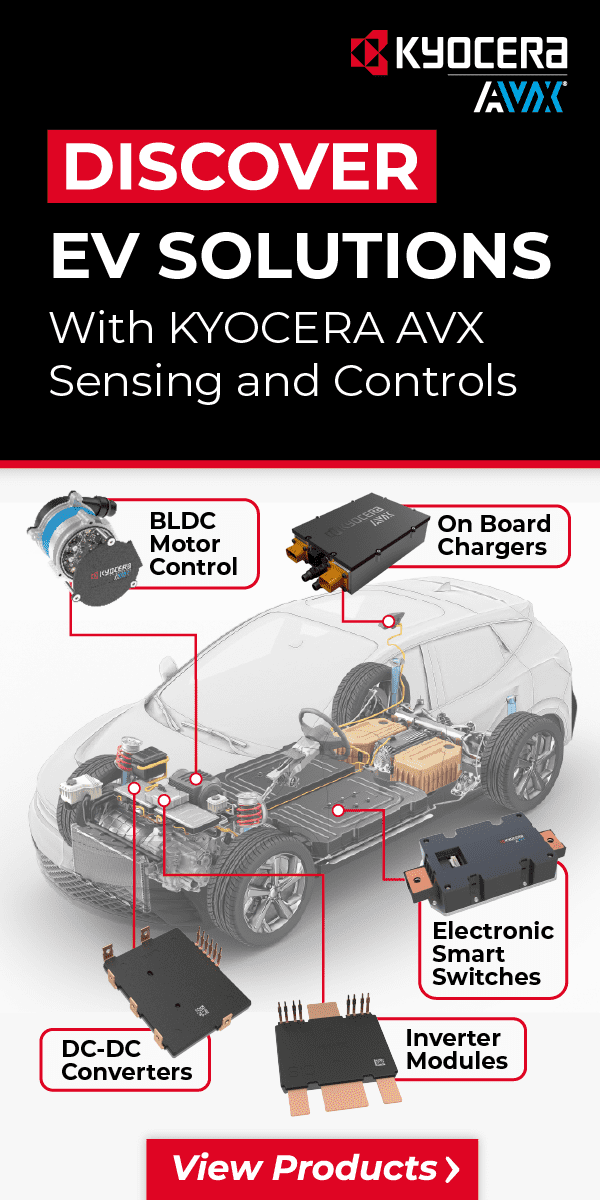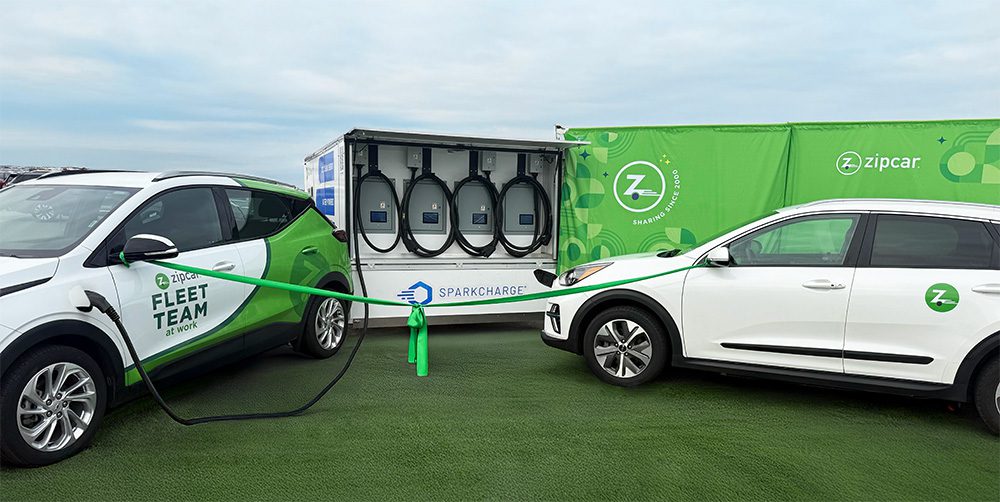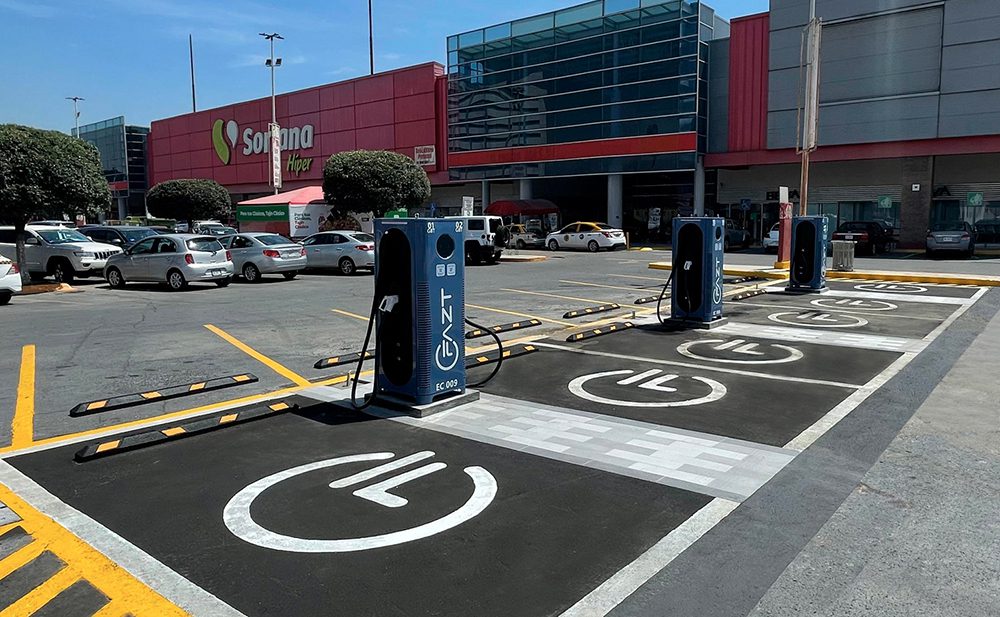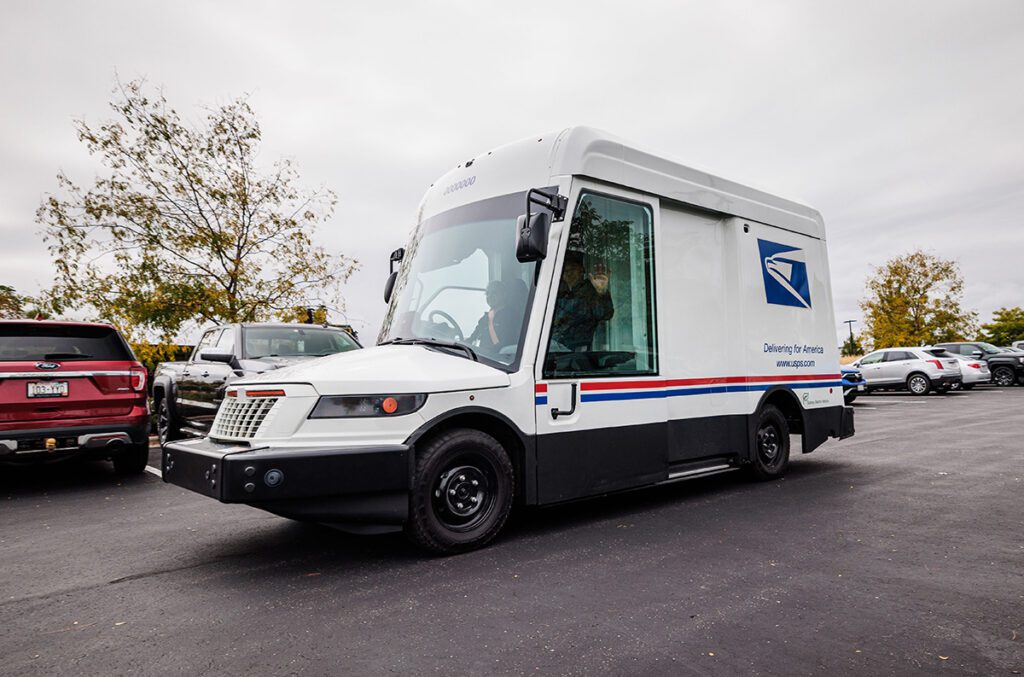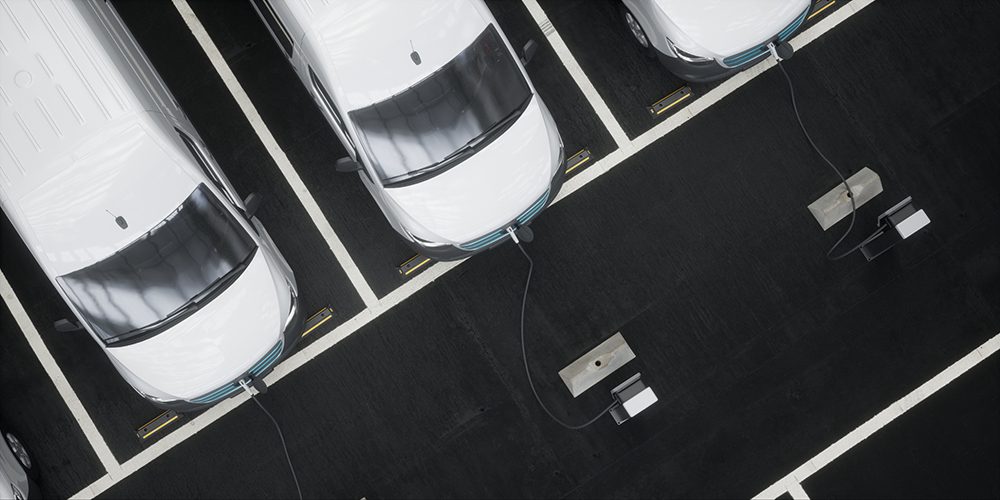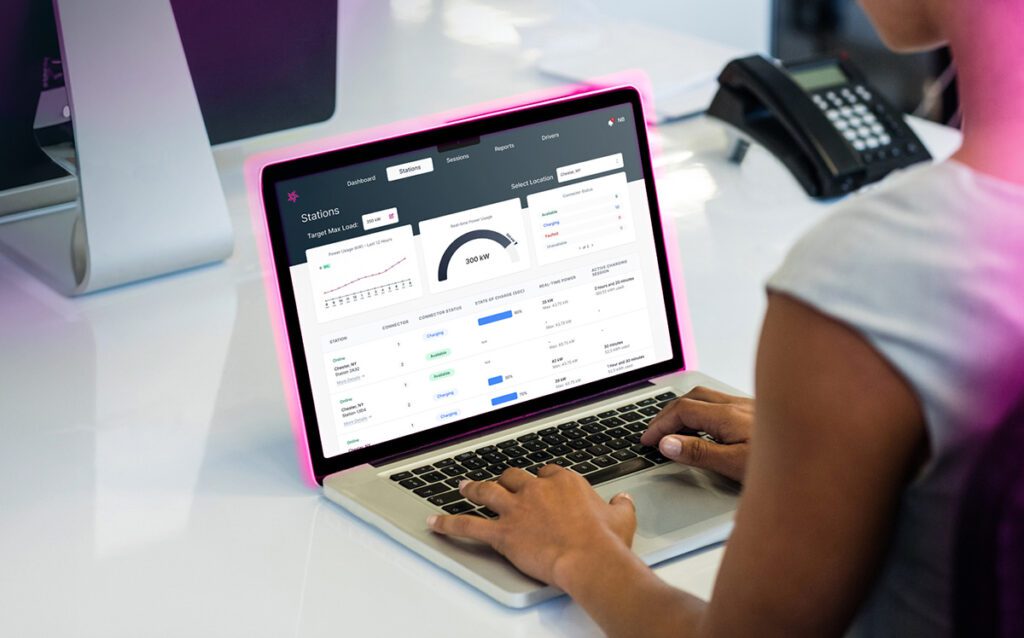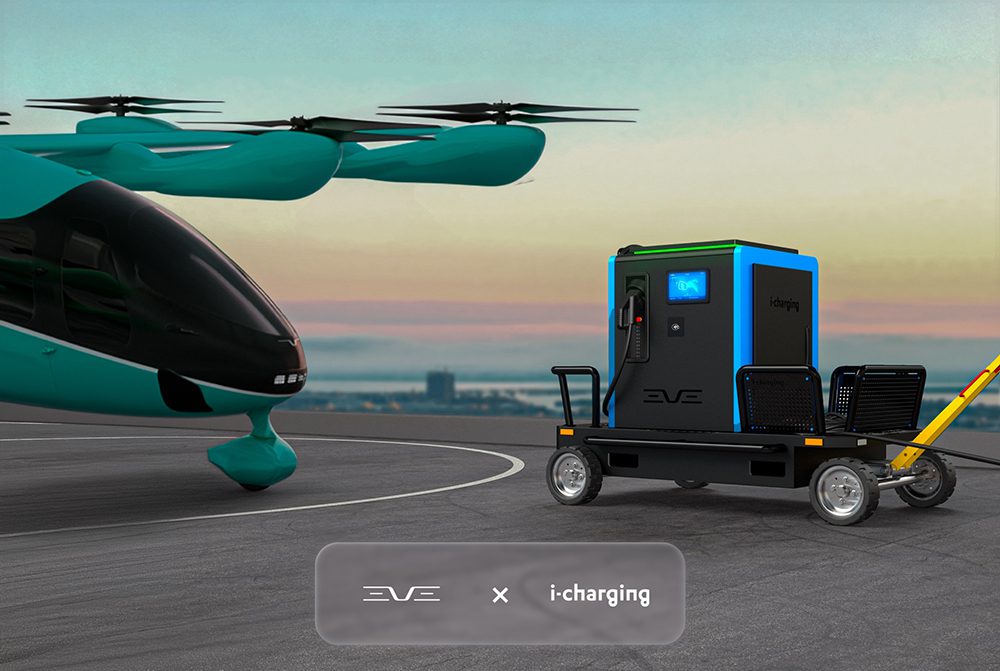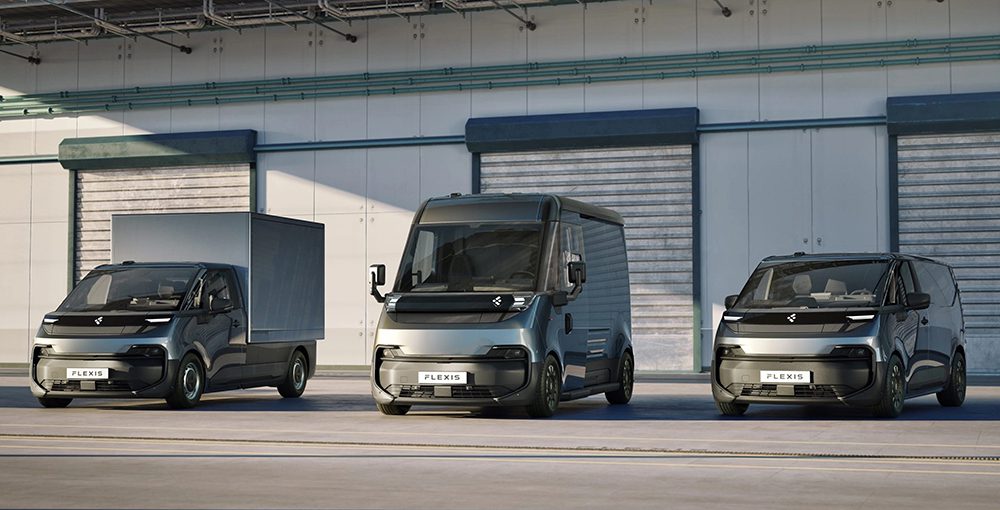Battery-electric sedans are a rare breed— that makes Hyundai’s striking Ioniq 6 a strong new entry.
Quick, name all the battery-electric sedans for sale in the US—that aren’t Teslas. By our count, there’s only been one: the pricey, luxury Lucid Air.
Now, there’s another: the 2023 Hyundai Ioniq 6 is on sale at your local Hyundai dealer, joining the Ioniq 5 crossover utility and the smaller Kona Electric hatchback. The new Ioniq 6 is built on the same E-GMP underpinnings as its utility sibling, but wears an entirely different and strikingly sleeker body.
While the production vehicle isn’t as striking as the Electric Streamliner concept first shown in January 2022, the arched window line and dropped tail of the Ioniq 6 still turn plenty of heads. Available in rear- or all-wheel-drive versions and three trim levels (SE, SEL and Limited), the new electric sedan starts at $43,000 but can hit $60,000 for a high-spec model.
Many models, one E-GMP
Hyundai’s E-GMP battery-electric platform wins kudos, and rightly so, for its rear-wheel-drive bias and 800-volt battery charging. Today, it’s used under not only the Ioniqs 5 and 6, but sister brand Kia’s EV6 and the luxury Genesis GV60—all effectively hatchback utilities except for the Ioniq 6 sedan. And that’s just the start: the Kia EV9 three-row electric crossover will break cover later this year, followed by the Hyundai Ioniq 7, a three-row family SUV on the same platform.
Ioniq 6 is a new entry in a battery-electric sedan category that’s essentially been dominated by one vehicle: the Tesla Model 3.
Hyundai’s well aware that SUVs now handily outsell sedans in North America. The Ioniq 6 won’t be the brand’s top EV seller—that role falls to the Ioniq 5. Still, it’s a new entry in a category that’s essentially been dominated by one vehicle: the Tesla Model 3.
Hyundai’s compact electric four-door lines up pretty closely against the Model 3. The two cars aren’t dimensionally identical, but they’re the only two battery-electric sedans on offer below $90,000 or so. It seemed a shame not to let people see them together, so on the March day we drove the Ioniq 6 at a media preview in Phoenix, we rented a Model 3 so we could photograph the pair side by side.
Overall, the Ioniq 6 represents a more comfortable, quieter and more conventional approach to a battery-electric sedan than the Model 3. The Tesla is undeniably sportier, more BMW-like, and eager to accelerate and carve through corners; the Hyundai is comparatively more relaxed, softer and gentler. It’s hardly an old-style American luxury car, wallowing on its springs, but many buyers may find it better balanced and more soothing to drive than the lithe, speedy Tesla.
Tesla vs Hyundai
Which exterior design you prefer is a matter of taste, though midway through its seventh full model year, the Model 3 design has become as common as Toyota Corollas in some precincts. Hyundai’s sleek, arced sedan is fresh and clean, especially from the front, though it gets busy at the rear with a spoiler below the rear window and another at the base of the trunk. Both interrupt the drooping banana shape that makes the car so distinctive. Automotive history fans may see a bit of Infiniti J30 or Mercedes-Benz CLS in its lines, though Hyundai claims the obscure Stout Scarab as a design influence. But we digress.
Inside, the Ioniq 6’s controls and user interface are relatively intuitive, its graphics are clear and coherent, and it retains actual knobs and buttons for several functions that the Tesla driver controls through the central touchscreen. The Model 3 approach is fairly well known by now: a steering wheel with scroll buttons, stalks behind the wheel, and then just a landscape-oriented central touchscreen on which drivers control virtually every other function.
There’s a fair amount of hard plastic inside the Ioniq 6, but the patterns and textures bring it up a notch.
There’s a fair amount of hard plastic inside the Ioniq 6, but the patterns and textures bring it up a notch. It took a while to get used to power-window switches on the center console, like a Jeep with removable doors. Hyundai said this was to widen the passenger compartment by eliminating switchgear from the inside door panel. (Tesla has window switches right where you expect them: in the armrest.)
For sedans in the same segment, the Ioniq 6 offers roughly the same battery capacity as the Model 3—but less range, less combined power from its two motors, and less torque.
EPA-rated ranges up to 361 miles
The Ioniq 6 price leader is the SE with a smaller 53 kWh Standard Range pack and rear-wheel drive only. It’s rated at 240 miles of range, but offers a low sticker price of just $42,715, including a mandatory $1,115 delivery fee. Don’t expect to see a lot of these on dealer lots; the vast majority of buyers will go for one of several Long Range models.
A base Ioniq 6 SE with the 77 kWh Long Range battery and rear-wheel drive is EPA-rated at 361 miles on its 18-inch wheels; add all-wheel drive, and the SE falls to 316 miles. The higher Limited trim adds many more features, along with larger 20-inch wheels, all of which cuts range to 305 miles for RWD, 270 miles with AWD. For comparison, the Tesla Model 3 Long Range we tested, with all-wheel drive and a 75 kWh battery, had a 353-mile rating against our Ioniq 6 Limited AWD range of 270 miles.
As for power, the front and rear motors in the Ioniq 6 are rated at 74 and 165 kilowatts (100 and 221 horsepower) and 446 lb-ft of torque.
As for power, the front and rear motors in the Ioniq 6 are rated at 74 and 165 kilowatts (100 and 221 horsepower) and 446 lb-ft of torque. The Model 3’s two motors come in at 147 and 188 kW (197 and 252 hp). We couldn’t get an estimated 0-to-60-mph acceleration time for our AWD Ioniq 6, and didn’t have proper testing equipment in our single-day drive to measure it properly, though one car magazine tested it at 4.3 seconds. Tesla quotes a 0-to-60 mph acceleration time of 4.2 seconds for the Model 3 Long Range with dual motors, which felt about right—meaning both are quite fast away from the stoplight for small sedans.
Two versions of fun to drive
The Hyundai corners flat and remains composed, but it’s more isolated from road feel—likely a plus in many drivers’ eyes. It doesn’t particularly invite drivers to toss it through corners, even though it’s perfectly capable of doing just that. It’s a closer analog, perhaps, to the Hyundai Sonata mid-size sedan: a middle-of-the-road sedan entry with the many benefits of a battery-electric powertrain.
The Tesla is more like a BMW 3 Series, a sport sedan that trades noise suppression and a bit of ride comfort for instantly available performance and roadholding that induces confidence and makes drivers want more. Its controls are considerably heavier than the Hyundai’s—it’s a car to be driven. Each approach is valid for its intended audience—neither car has anything to apologize for. They’re just two interpretations of how a car should feel to its driver.
Behind the wheel, Hyundai requires drivers who want one-pedal operation to pull back the left steering-wheel paddle to invoke the i-Pedal function—every single time the car is turned on. That’s annoying when other EVs, including the Chevrolet Bolt EV, retain the setting through multiple power cycles. Strong regenerative braking and one-pedal driving are the default on the Tesla.
The Ioniq 6’s front seats are comfortable and supportive for drivers of virtually any size, but that falling roofline exacts a penalty on rear-seat headroom—just as it does on trunk space. Still, outside of taxi and Uber duty, most mid-size sedans we see on the road have precisely one person in them, so perhaps rear-seat accommodations simply aren’t that important.
Whither Hyundai, whither Tesla?
The Ioniq 6 is another proof point for the idea that Hyundai-Kia is one to watch in the EV battle. It looks entirely different than its Ioniq 5 sibling—you might not know the two are from the same maker. You’d certainly never know they had the same underpinnings—at least until you sat behind the wheel, and saw the family twin 12-inch digital displays side by side, and the identical infotainment graphics.
The Ioniq 6 is another proof point for the idea that Hyundai-Kia is one to watch in the EV battle.
But the E-GMP platform, with its ability to fast-charge up to 235 kW (under optimal circumstances), and the speed at which models that use it are being rolled out, suggests that the company understands the design and important features of EVs better than some competitors.
Whether Hyundai understands the presently dire state of non-Tesla public fast charging is a different topic. The Ioniq 6 comes with three years of unlimited fast charging on the Electrify America network, which may perversely encourage buyers—even those who can charge at home—to overuse public DC fast charging stations. That’s not good for the car’s batteries, or for the drivers who genuinely need fast charging stations to complete their road trips.
Then there’s the unpredictable and unreliable nature of the half-dozen public fast charging networks, a topic Hyundai execs were notably uninterested in discussing. Tesla’s advantage on that front is unquestioned, and was recently underscored by deals in which Ford, GM and Rivian EVs will be able to use the Tesla Supercharger network. Hyundai has nothing comparable to offer at the moment.
Still, the Hyundai Ioniq 6 is to be welcomed as an electric car, not an SUV. It’s handsome, pleasant to drive, offers versions with significant range, and provides a competitor of sorts to the all-but-ubiquitous Tesla Model 3. For that combination of attributes, Hyundai deserves a hand.
Note: A more detailed comparison of the Hyundai Ioniq 6 and Tesla Model 3 can be found in The Autopian: “I Rented a Tesla Model 3 To Test Against The New Hyundai Ioniq 6. Here’s How They Compare.”
Hyundai provided airfare, lodging and meals to enable Charged to bring you this first-person report.
This article appeared in Issue 64: April-June 2023 – Subscribe now.







